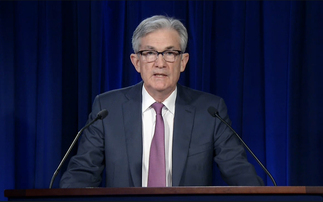
The Bank of England (BoE) cut Bank Rate from 5.25% to 5.00% today with the vote split 5-4-0 for a cut-hold-hike respectively. Expectations going into the meeting were mixed with the market pricing in the probability of a cut at just above 50%. Gilts rallied ahead of the meeting today in anticipation of a potential rate cut which helped to reduce the premium we previously saw when global rates rallied and gilts underperformed.
Considering how finely balanced the market expectations were and the hawkish commentary from the BoE, we foresee a limited market reaction as the cut was already broadly priced in. Now that the cutting cycle has started, we expect that the anticipation of further cuts will act as a positive tailwind for high quality fixed income markets, particularly in the front-end. Ahead of the meeting, we took long duration positions to lock in elevated yields prior to the first interest rate cut.
Restrictive rates are continuing to feed through to inflation, but economic data remains supportive
The BoE's restrictive policy has now taken effect with CPI gradually falling from its peak of 11.1% in October 2022 to 2.0% in June 2024. Given that we are already back at the BoE's target CPI and now that the first cut has occurred, the question becomes when will the next cut follow? The consensus view appears to be that the BoE will cut every other meeting until March 2025 where they will reassess whether to continue cutting or to pause.
Despite the restrictive monetary policy which we have seen since 2021, the economy remains resilient with robust GDP and PPI data indicating that we are still not at risk of entering a recession. This implies that the BoE could maintain its restrictive policy to reduce the risk of inflation reacceleration without causing too much damage to economic growth. Therefore, whilst the cutting cycle has now started, it is still possible that the BoE could delay further cuts.
Figure 1: UK CPI versus BoE forecasts
Source: Fidelity International, Bank of England, 1st August 2024.
Inflation reacceleration is a risk and attention will quickly turn to the Autumn Budget
We expect inflation to reaccelerate, and this is supported by the BoE forecasts which project CPI to rise above target before returning to 2% in 2025, as shown in Figure 1. Whilst services inflation has come down, it still remains stickier than expected and above BoE projections. The upside in services inflation has been a combination of index-linked (annual) price resets and elevated travel and accommodation prices.
The Autumn Budget will be announced on 30th October which will quickly become the focus for UK fixed income investors. It is expected there will be a spending gap of up to £21.9bn. At present, the Treasury estimates that £5.5bn will be sourced from savings in other areas whilst the remaining £16.4bn may need to be backed by fresh debt (or higher taxes). Given the potential for additional borrowing (which tends to impact the longer end of the curve), we maintain our 2s10s steepener trade whereby we are long the 2yr part of the curve and short the 10yr part of the curve. This allows us to play into the central bank cutting cycle whilst somewhat protecting against the possibility that longer yields edge higher amid worsening fiscal conditions.
Moreover, QT conditions are something we are monitoring closely. There was previously some speculation that the BoE would slow down its asset sales to provide extra liquidity to the Treasury, with economists estimating that ending active sales would save the Treasury up to £10bn per year. Whilst the BoE is not due to vote on the target for asset sales under the QT programme for the next year until its September meeting, it did provide some commentary which would support it maintaining or even accelerating its asset sales to reduce its portfolio interest rate risk. This could create an even stronger fiscal headwind because accelerating asset sales rather than letting them mature brings forward additional losses.
Short dated corporate bonds remain the sweet spot
With rate cuts now underway, we continue to like high quality corporate bonds, particularly given the additional yield advantage (via the credit spread) over government bonds. Within the investment grade credit landscape, we particularly like the short dated (sub-5yr) part of the curve which offers attractive risk-adjusted returns amid a rate cutting cycle for two reasons. Firstly, the short end of the curve is influenced more by monetary policy than the longer end of the curve which, in a cutting cycle, means there can be a larger positive interest rate impact. Furthermore, attractive ‘Wipeout yields' at the front end of the curve offer a buffer against further yield volatility which we discuss more here. Accordingly, we had been implementing shortening trades across our portfolios, where we are still able to capture 100bps of credit spread and remain long carry.
Important information
This information is for investment professionals only and should not be relied upon by private investors. Past performance is not a reliable indicator of future returns. Investors should note that the views expressed may no longer be current and may have already been acted upon. The value of bonds is influenced by movements in interest rates and bond yields. If interest rates and so bond yields rise, bond prices tend to fall, and vice versa. The price of bonds with a longer lifetime until maturity is generally more sensitive to interest rate movements than those with a shorter lifetime to maturity. The risk of default is based on the issuers ability to make interest payments and to repay the loan at maturity. Default risk may therefore vary between government issuers as well as between different corporate issuers. Due to the greater possibility of default, an investment in a corporate bond is generally less secure than an investment in government bonds. Fidelity's range of fixed income funds can use financial derivative instruments for investment purposes, which may expose them to a higher degree of risk and can cause investments to experience larger than average price fluctuations. Reference to specific securities should not be interpreted as a recommendation to buy or sell these securities and is only included for illustration purposes. Investments should be made on the basis of the current prospectus, which is available along with the Key Investor Information Document (Key Information Document for Investment Trusts), current annual and semi-annual reports free of charge on request by calling 0800 368 1732. Issued by FIL Pensions Management, authorised and regulated by the Financial Conduct Authority. Fidelity International, the Fidelity International logo and F symbol are trademarks of FIL Limited. FIPM: 8348














